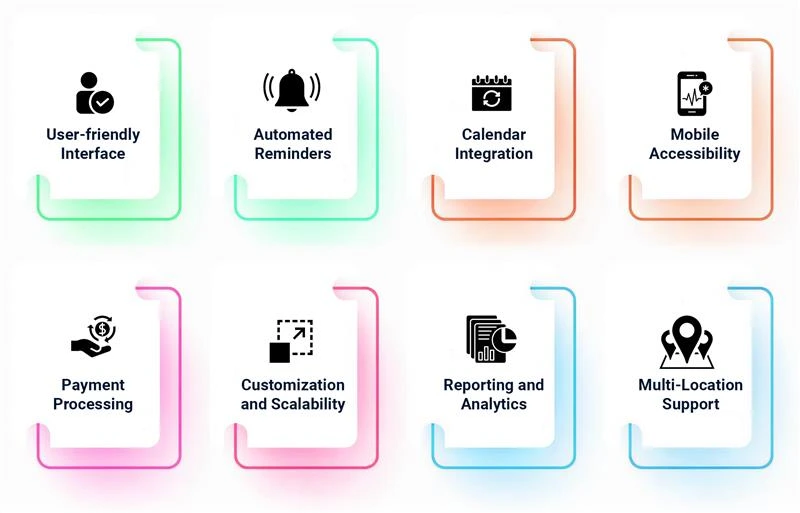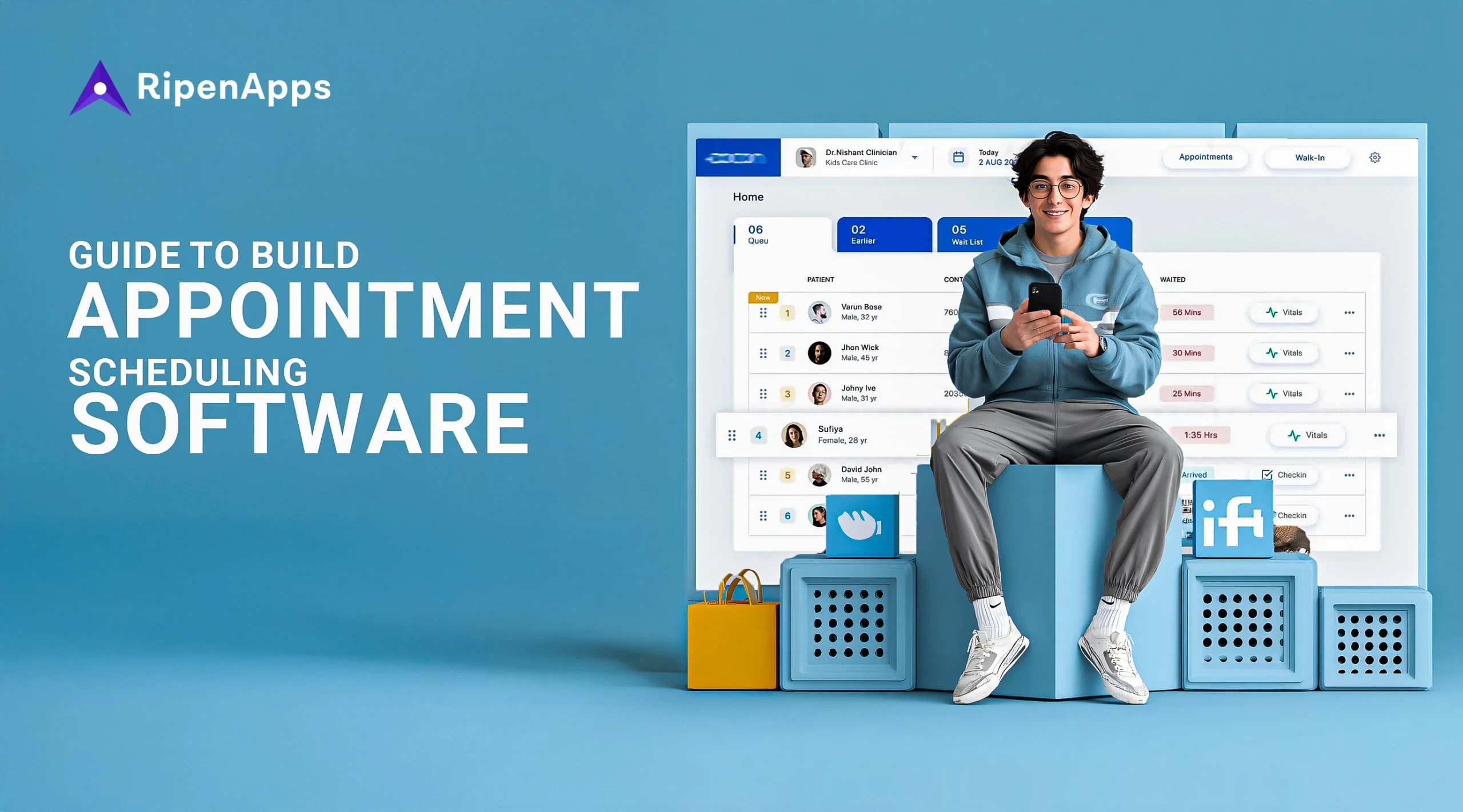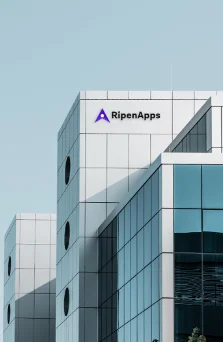In a world where time is the most precious resource, the art of scheduling has undergone a seismic transformation. Gone are the days of back-and-forth emails and missed calls. Today, appointment scheduling software stands at the forefront of operational efficiency and boosting customer satisfaction to a great extent.
For the past few years, the global appointment scheduling software market has been continuously growing. This showcases the increasing adoption of digital solutions to optimize day-to-day business processes and meet dynamic consumer expectations.
Modern appointment scheduling software offers several benefits, such as calendar management, seamless integration features like automated reminders, real-time availability updates, and other useful business tools. These advanced features & functionalities not only reduce no-shows but also increase operational efficiency and customer satisfaction.
So, if you are an entrepreneur or planning to run a business to disrupt the market, this blog will help you to discover some useful insights for building robust appointment scheduling software. You will have a better understanding of market dynamics to integrate cutting-edge features. So, let’s explore the development process.
Table of Contents
What is Appointment Scheduling Software?
Appointment Scheduling Software is a digital tool created to automate and simplify the procedure of managing meetings, appointments, and bookings for businesses and professionals. By reducing the work of manual scheduling, this software boosts overall efficiency, reduces administrative workload, and improves customer satisfaction to a great extent. Clients can look at available slots on their own and book appointments as per their convenience, and businesses can monitor schedules, monitor bookings, schedule cancellations, and deal with no-shows more efficiently. Therefore, this technology is widely used in many different industries, such as healthcare, education, and personal services. The main reason is to maximize scheduling operations and overall productivity.
Market Overview of An Appointment Scheduling Software
Over the past few years, the appointment scheduling software market has experienced significant growth. According to Fortune Business Insights, the global market size was valued at USD 470.7 million in 2024 and is projected to reach USD 1,518.4 million by 2032.
It is growing at a compound annual growth rate (CAGR) of 15.7% during the years 2025-2032. This stat shows that the healthcare sector’s demand for patient appointment scheduling software has accelerated. It also highlights that automated patient self-scheduling significantly improved appointment adherence and reduced administrative burdens. That’s why, even when running a small business, you must leverage online appointment scheduling software to manage client bookings efficiently without incurring substantial costs.
Apart from this, the high demand is majorly driven by the increasing adoption of digital solutions across industries. Today, several businesses are aiming to optimize their scheduling processes. They are aiming to improve their customer engagement.
Key Features of Appointment Scheduling Software

To develop the best appointment scheduling software, you need to incorporate the following features:
- User-friendly interface: The first thing you need to ensure is that your app has an intuitive design. This will ensure that clients can easily book, reschedule, or cancel appointments. One of the major advantages of this is that it will enhance user satisfaction, and they will keep coming back to use your app.
- Automated Reminders: Your app must send timely notifications via email or SMS to reduce no-shows and optimize staff utilization.
- Calendar Integration: Appointment Scheduling software must have seamless synchronization with popular calendars like Google Calendar or Outlook. This will offer real-time availability and prevent double bookings.
- Mobile Accessibility: Your app will be successful when you have a responsive design or dedicated mobile scheduling app that caters to the growing number of users. Make the app accessible for the users so that they can prefer managing appointments on their smartphones.
- Payment Processing: As security is becoming one of the major concerns, it’s become necessary to seamlessly integrate secure payment gateways to facilitate upfront payments. It also streamlines the booking process for your target users.
- Customization and Scalability: The software should be adaptable to various business models and scalable to accommodate growth. Your app should be suitable for both small enterprises and large organizations.
- Reporting and Analytics: The appointment scheduling software should provide comprehensive reports on appointment trends, peak times, and client demographics. The critical report analysis will help in strategic decision-making.
- Multi-Location Support: Businesses operating in multiple locations must have centralized management of appointments across all branches.
How to Develop an Appointment Scheduling Software?

Developing a robust appointment scheduling software involves a systematic approach. So, if you are planning to develop an online appointment scheduling software, here is the step-by-step guide :
- Requirement Analysis: First of all, you need to engage with stakeholders to understand their specific needs. As a business owner, you need to understand your target users and desired functionalities.
- Market Research and Competitor Analysis: Next, assess existing solutions to identify market gaps and opportunities for differentiation. If you will deep-dive your research, it will help you to have an edge over your competitors. Deep research is also a crucial part of any well-structured software development lifecycle guide. You will get to know that your strategy aligns with real user needs and sets a strong foundation for the development lifecycle.
- Design and Prototyping: While building a feature-rich appointment scheduling software, you also need to develop wireframes and prototypes. Work with expert designers who can focus on user experience and interface design. The appealing design of your software will help your users to keep coming back and easily navigate through it.
- Technology Stack Selection: You also need to choose appropriate technologies considering scalability, security, and compatibility. If you are a non-tech founder, you can work closely with a globally-recognized mobile app development company as they have years of expertise to leverage the latest emerging technologies while developing your software.
- Development and Integration: After that, make sure to implement core features and functionalities. This ensures seamless integration with existing systems and third-party services.
- Testing and Quality Assurance: Once all the processes are completed, you need to conduct rigorous testing to identify and rectify bugs. Thus, it ensures that the software operates smoothly under various conditions.
- Deployment and Maintenance: After this, it is time to launch the software, monitor performance, and provide ongoing support and updates based on user feedback. Remember that you need to monitor your app for better performance continuously.
Marketing and Monetization
As a business owner investing in an appointment scheduling software development, you also need to ensure the software’s success. Here are some ways to market and monetize your software :
- Targeted Marketing Campaigns: Highlight unique selling propositions and tailor marketing efforts to specific industries, such as promoting healthcare appointment scheduling software to medical practices.
- Flexible Pricing Models: You can offer various pricing tiers. Some of the options include freemium options to cater to different business sizes and budgets.
- Partnerships and Integrations: Businesses can also collaborate with complementary service providers to expand the software’s ecosystem and value proposition. This will ensure the success of your software in the long run.
Case Studies and Success Stories
Before you kick-start the development of a custom appointment scheduling software, you must have a look at success stories to get inspiration. Here, we have mentioned some of the popular case studies :
1. Fortune 500 Financial Services Firm Saves $400K Monthly
A leading Fortune 500 financial services company implemented SUMO Scheduler successfully. With the help of software, the company was able to automate its appointment scheduling process. This transition led to significant cost savings, with the firm saving approximately $400,000 per month. Moreover, the automation helped them to improve customer experience and streamline operations. Thus, this success story demonstrates the substantial financial benefits of efficient scheduling systems.
2. Medtronic’s Patient Scheduling Enhancement
Medtronic is a medical technology company that sought to improve patient scheduling efficiency. They also adopted SUMO Scheduler, which was an automated appointment scheduling software. Therefore, it allows patients to book appointments online without contacting customer service. One of the major benefits of this transition was that it not only streamlined the scheduling process but also addressed privacy concerns associated with previous non-secure methods. That’s why the target users were more interested in availing the services than ever before.
3. R&G Brenner’s Tax Appointment Optimization
R&G Brenner is a leading tax preparation firm and faced challenges in managing high appointment volumes during tax season. By successfully implementing Coconut Software’s scheduling solution, they achieved real-time visibility into appointment volumes. Therefore, it allowed them to have better staff allocation and improved client booking experiences.
Wrapping Up
In today’s digital world, developing an appointment scheduling software goes far beyond simply automating bookings. Day by day, the demand for seamless, real-time scheduling solutions is rising across various industries. Therefore, investing in a feature-rich, cloud-based scheduling solution can help you to improve efficiency, reduce no-shows, and elevate the overall user experience. With essential features & functionalities such as calendar syncing, automated reminders, real-time availability, mobile access, and AI-driven personalization, businesses can deliver exceptional service. All you need to do is follow the step-by-step guide to build an appointment scheduling software according to your business goals. This will help you to future-proof your services to a great extent.
FAQ’s
Q1. Why should businesses invest in appointment scheduling software?
Businesses should invest in such software because it reduces manual scheduling errors, minimizes no-shows through automated reminders, and improves customer satisfaction by offering 24/7 booking capabilities.
Q2. How long does it take to develop appointment scheduling software?
The development time of an appointment scheduling software varies based on complexity. However, it ranges from a few weeks for basic versions to several months for feature-rich, customized solutions.
Q3. Is appointment scheduling software secure?
Yes, it is secure. Premium security solutions often offer robust data protection measures, including encryption and compliance with data privacy regulations.
Q4. Can appointment scheduling software integrate with existing systems?
Yes, many scheduling tools offer integrations with CRM systems, email platforms, and payment gateways to streamline day-to-day business operations.
Q5. How does appointment scheduling software improve customer experience?
It offers clients the convenience of booking appointments at their preferred times. Therefore, it helps in reducing wait times and provides timely reminders. Apart from this, it enhances the overall satisfaction.










 India
India USA
USA Australia
Australia Canada
Canada UK
UK UAE
UAE
